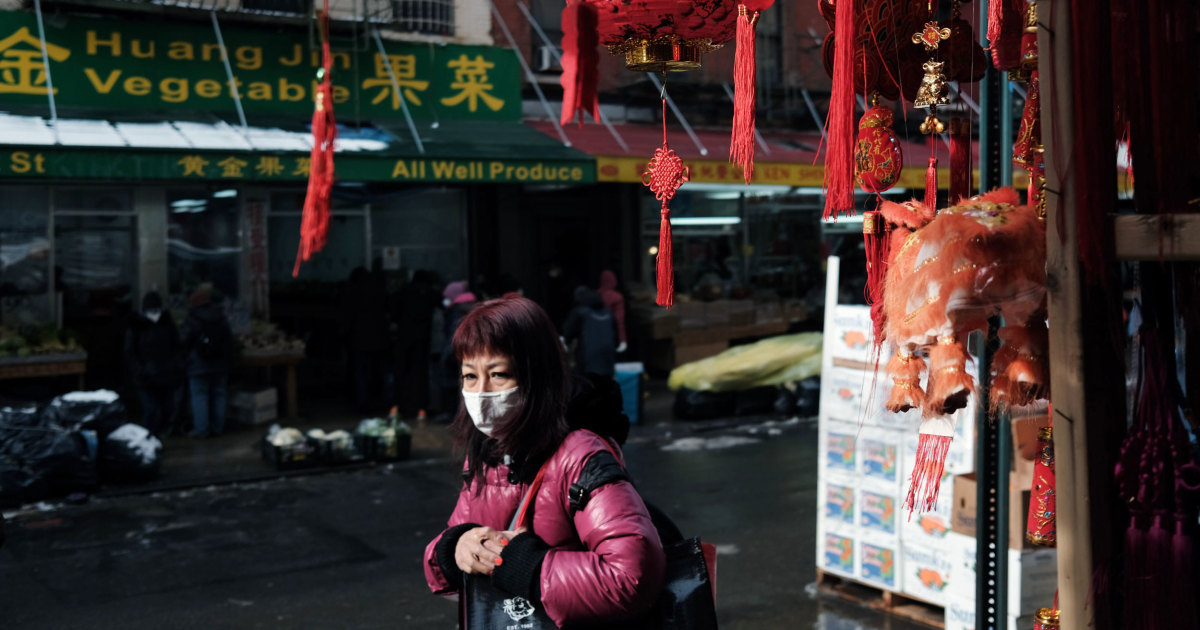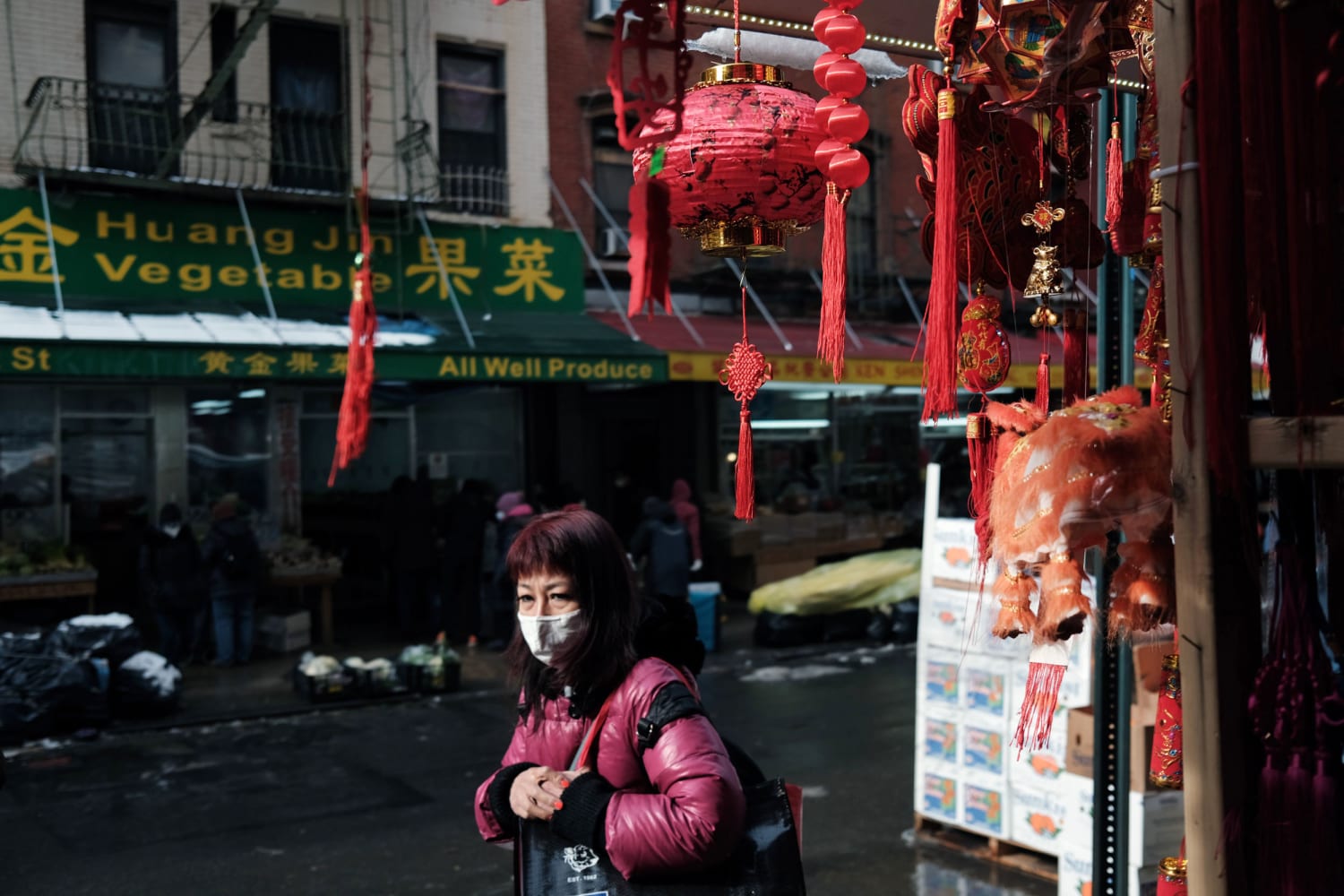
As the recent wave of attacks on older Asian Americans prompts calls for action and activism, experts urge the use of precise, accurate language in discussing the violence.
The robberies and assaults in several big-city Chinatowns have led to significant media coverage and outcry from activists, many of whom have labeled the incidents hate crimes. But recent higher-profile cases that have gone viral on social media aren’t being investigated as such, law enforcement officials say. Officials say the occurrences don’t show signs of being racially motivated.
Social media posts have conflated violence against people who are Asian American with hate crimes against the community at large, tying the crimes to pandemic-related racism. Some sources have declared a “spike” in hate crimes, citing an astronomical increase. But the figure they refer to specifically reflects New York City and New York police data obtained by NBC Asian America, which showed three anti-Asian hate crimes in 2019 and 28 last year. No hate crimes were reported this year so far.
Other sources refer to 18 incidents this year involving Asian Americans in Alameda County, California. But local law enforcement stated that there’s no proof any of them have been racially motivated. In San Francisco, six hate crimes were reported in 2019 and nine the following year. In 2021, the city reported one hate crime.
Not all cities reflected increases, either. Washington, D.C., for example, reported a decrease from six to one from 2019 to 2020.
Some outlets have also reported almost 3,000 “hate crimes” during the pandemic. The reporting forum Stop AAPI Hate collected almost 2,800 reports of hate incidents nationwide over five months last year. But the incidents weren’t necessarily hate crimes; they included less severe, yet insidious, forms of discrimination, including shunning, verbal harassment and name-calling. Stop AAPI Hate said 69 occurrences included racist language, in addition to a physical incident. The nonprofit doesn’t report those to police.
Regardless, Asian Americans have every right to their fear and anger at this time, said Michael Eric Dyson, a race and religion scholar at Vanderbilt University in Nashville, Tennessee.
“We have to acknowledge the pain. Asian brothers and sisters can no longer be demanded to be quiet as the entry, as the price they have to pay for acceptance in the broader community of American ethnicities,” Dyson said.
While anti-Asian sentiment has risen markedly during the coronavirus pandemic, experts say it’s important to evaluate each case individually. They said both defendants and victims deserve a fair, rather than a public, trial no matter what race they may be. They emphasize that that’s particularly important if suspects are of color in the context of a justice system that hasn’t been proven to be colorblind.
Calls for protection and safety among Asian Americans have reverberated throughout the pandemic, but they were catalyzed by the particularly graphic string of attacks on elders at the beginning of this year, many of which were caught on camera and circulated online.
In a video from January, a 91-year-old person can be seen being violently pushed to the ground in Chinatown in Oakland, California. The suspect, Yahya Muslim, who is accused of two other attack the same day, was charged with three counts of assault. A separate attack last month that was recorded on surveillance video showed Vicha Ratanapakdee, 84, being shoved to the ground in San Francisco. Ratanapakdee later died from his injuries.
Sliman Nawabi, a deputy public defender who is representing Antoine Watson, 19, in the San Francisco incident, said there is “absolutely zero evidence that Mr. Ratanapakdee’s ethnicity and age was a motivating factor in being assaulted.”
“This unfortunate assault has to do with a break in the mental health of a teenager. Any other narrative is false, misleading, and divisive,” Nawabi said.
In another violent incident, in New York City, Noel Quintana, 61, a Filipino American, was slashed in the face while riding the subway. Quintana had little interaction with his attacker, a stranger whom he was moving away from when he was attacked. He told People magazine that he was unsure of the motive behind the attack.
“I don’t want to think because I’m Asian,” he said. “I don’t want to think about that. Because it could also happen to anybody, but — I don’t know.”
The three incidents aren’t being investigated as hate crimes, but publications and activists have grouped them under the term without supporting evidence that they have been racially motivated.
“Coverage should attend to nuance, be clear about what is not known in a case, seek out answers to difficult questions, and more not just so that potential jurors are not misled but also so that those at stake have their stories better told.”
Stanley Mark, a senior staff attorney for the Asian American Legal Defense and Education Fund, a civil rights organization, said that in theory, jurors are expected to remain unswayed by public rhetoric. But it’s not guaranteed in practice. He said jurors can have their own implicit biases. Pawan Dhingra, a professor of American studies at Amherst College in Massachusetts, said media attention, racial composition, theatrics of an attorney and more can influence jurors’ opinions aside from the facts at hand.
Mark said: “The current political context of the facts, including the political rhetoric in each case, may or may not make a difference depending on the implicit bias among jurors and judges, although none of it should be counted in a verdict.”
Mark said criminal statutes enhance penalties for bias crimes in some states. If incidents are proven to be hate crimes, he said, sentences can be lengthened.
Dhingra said the media should be precise, not just because of the impact of coverage in the courtroom.
“Coverage should attend to nuance, be clear about what is not known in a case, seek out answers to difficult questions and more, not just so that potential jurors are not misled, but also so that those at stake have their stories better told,” he said.
Dyson said that when cases aren’t determined to be hate crimes, “we want to be a bit reserved to make certain we’re not unnecessarily inflaming tensions and undue hostilities.” He said prematurely declaring them as such, particularly because the suspects in some cases have been Black, can have a deleterious effect.
Incorrect use of “hate crime” labeling “can have a negative impact on either side, on reinforcing the vicious stereotype of the natural Black inclinations for crime and that we’re thugs,” Michael Eric Dyson said. “And on the other hand, alerting Asian communities or heightening their awareness about their safety and security may be sending a false signal that there is a nonexistent attempt on the part of some Black communities to target Asian brothers and sisters.”
“It can have a negative impact on either side, on reinforcing the vicious stereotype of the natural Black inclinations for crime and that we’re thugs,” he said. “And on the other hand, alerting Asian communities or heightening their awareness about their safety and security may be sending a false signal that there is a nonexistent attempt on the part of some Black communities to target Asian brothers and sisters.”
Dhingra said Asian Americans can be targeted for a variety of reasons, not solely because of racial animus. Assailants could perceive them as easy or lucrative targets, instead. Either way, it’s still “a type of profiling that we must account for,” he said. Erroneously labeling a crime based on assumptions not only could risk a problematic punishment, but it could also make it harder to keep the Asian American community safe.
“We have to attend to what is behind the crimes and work with communities to make them safer,” he said. “We can only do that if we know what is actually going on.”
Violence hasn’t been restricted to the Asian American community. Law enforcement statistics show that homicides in major cities have risen at alarming rates across the board; advocates attribute the crimes to the environment created by the pandemic and poverty. Chicago police, for example, reported about a 50 percent increase at the end of 2020 compared to the previous year, with 750 murders.
Dyson said he understands why people are tempted to connect the incidents to the rampant anti-Asian sentiment tied to the pandemic. He said that with Donald Trump’s perpetuation of the “Chinese virus” discourse in the political bloodstream, the Trump administration had “unleashed the floodgates of anti-Asian sentiment.”
Federal hate crime data for 2020 haven’t yet been released; however, an intelligence report compiled by the FBI’s Houston office, which was obtained by ABC News, showed that the agency had expected a rise in such crimes.
“The FBI makes this assessment based on the assumption that a portion of the US public will associate COVID-19 with China and Asian American populations,” the report read.
Dyson said the Black community, like others, hasn’t been untouched by the Trump administration’s incendiary rhetoric. And just as the Asian American community isn’t immune to perpetuating anti-Blackness, the Black community can be vulnerable to absorbing the anti-Asian discourse.
“Just because Black folk have been oppressed themselves doesn’t issue a carte blanche, so to speak, exempting us from looking at whatever possible internalization of certain elements of our community, of the hostility toward Asian folk in regard to the ‘Chinese virus’ and the way in which that discourse targets AAPI folk with such vicious particularity,” he said.
Dyson said history has shown that marginalized communities can be manipulated by white supremacy and that communities of color must be vigilant. Ultimately, regardless of the intention behind the crimes, the fear and pain felt by the Asian American community are real and valid, the experts said. Dhingra said that such incidents are crimes nonetheless and that images circulated of them have been terrifying.
Asian Americans and other marginalized groups shouldn’t bear the brunt of racism, prejudice and bigotry, Dyson said. And above all, they shouldn’t have to feel that their concerns are invalid in comparison to those of other marginalized communities.
“It’s a way to balance that by saying, look, we don’t want to reinforce any stereotypes. But at the same time, we want to uproot and address any form of prejudice or bigotry that prevails in any community,” he said.
Source: | This article originally belongs to Nbcnews.com










